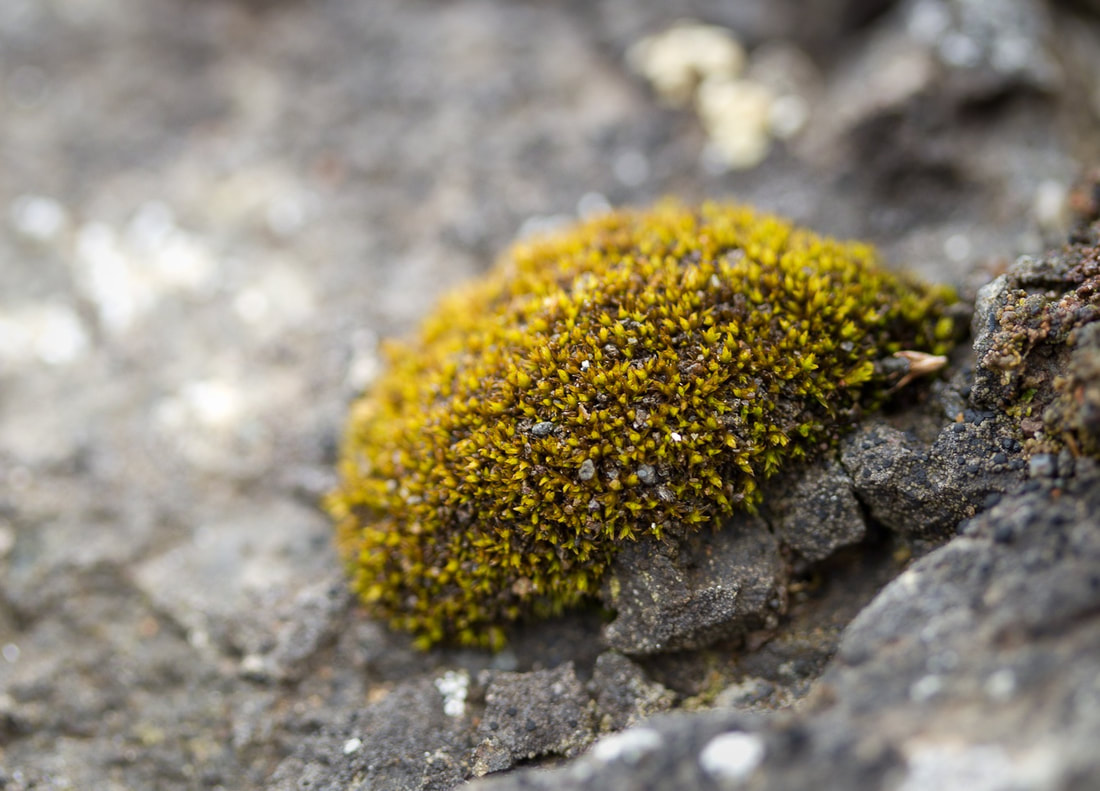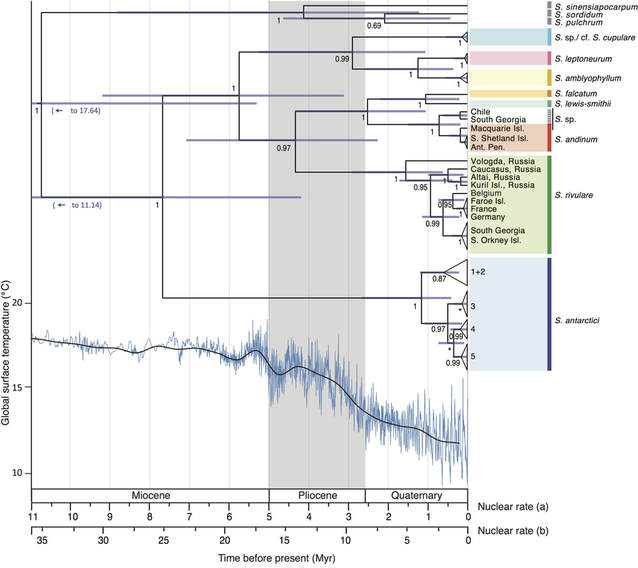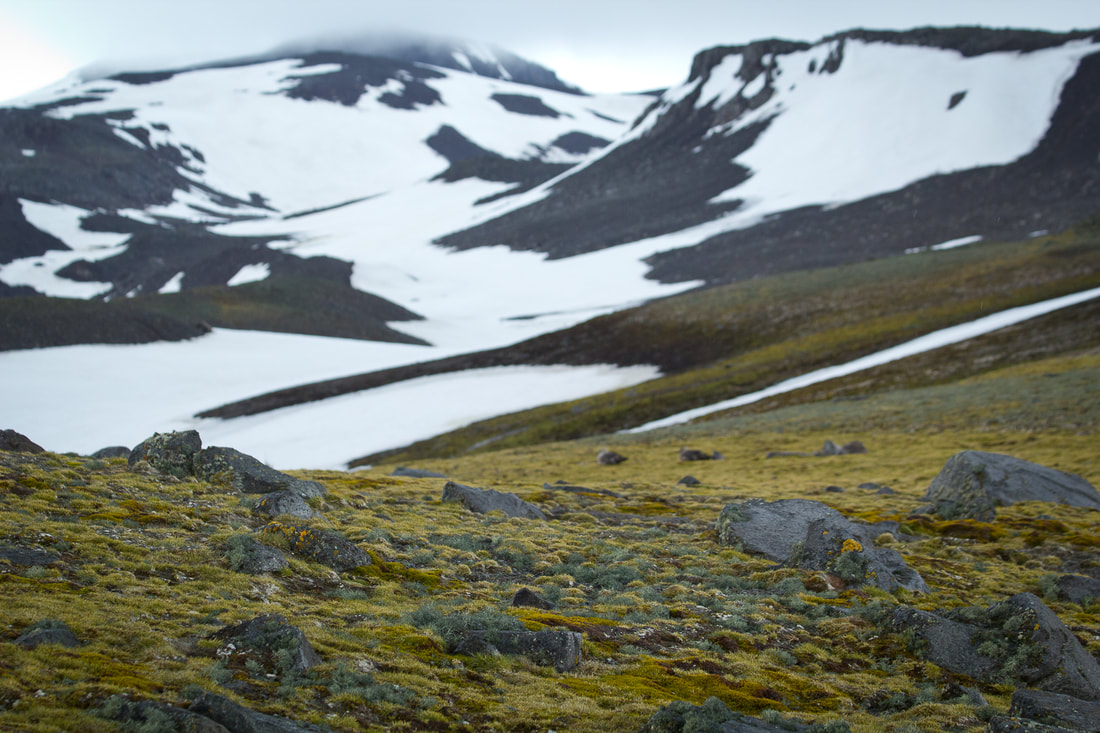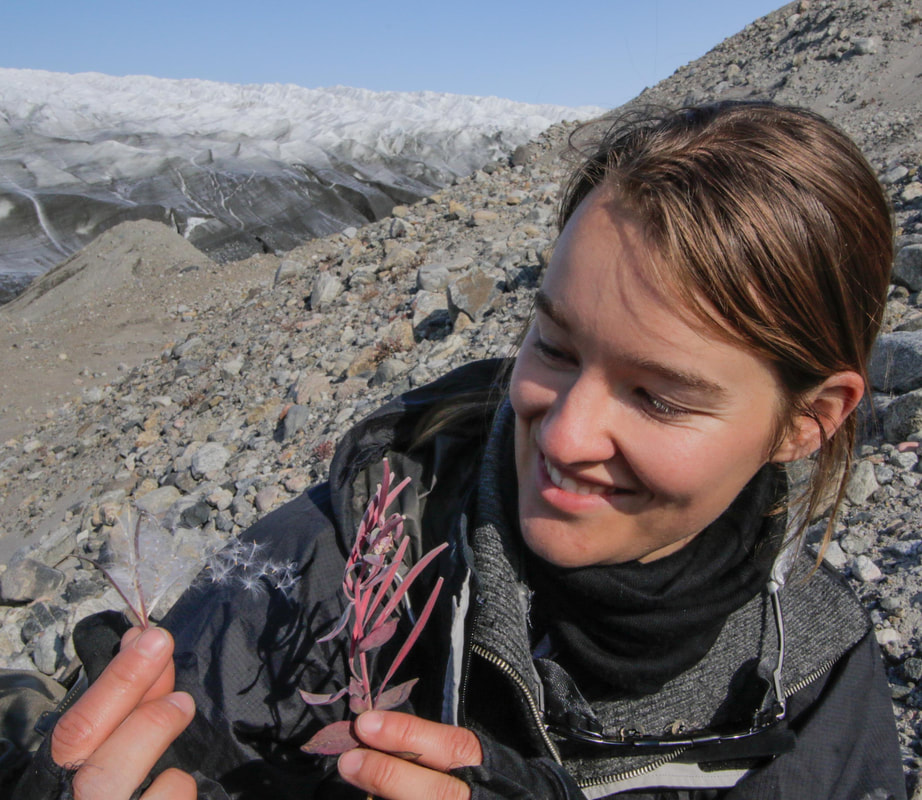Schistidium reveals an old evolutionary history on the continent In a recent phylogenetic study we assessed the diversity, richness and relative age divergences within the moss genus Schistidium (Fig. 1). It is the most species-rich plant genus in the Antarctic, as well as the plant genus containing most Antarctic endemic species. It is therefore a particularly interesting genus to investigate for possible long-term in situ persistence. The phylogenetic analyses revealed that most previously described Antarctic Schistidium species were genetically distinct, confirming the validity of at least seven of the thirteen currently recognized Antarctic species. The molecular dating analyses suggested that all divergences between species took place at least ~1 Mya, suggesting a likely in situ persistence in Antarctica for (at least) all endemic Schistidium species (Fig. 2). This provides a valuable contribution to studies on the adaptive potential of Antarctic plants to survive climate change (throughout both warmer and colder conditions) over both historical and contemporary timescales. Fig. 2. Molecular dating analyses showing a phylogenetic tree with estimated divergence times between and within different Antarctic Schistidium species.Timescales for different rates are shown and are based on previously calculated nuclear substitution rate from (a) Polytrichaceae mosses, and (b) flowering plants. For more information see here. The endemic species Schistidium antarctici: a common and particularly old Antarctic plant species Schistidium antarctici, one of the most widespread and abundant moss species in Antarctica, can be found in nearly all ice-free coastal regions of all generally accepted Antarctic sectors. The molecular analyses (Fig. 2; above) suggest that the species diverged from other Antarctic species in the late Miocene, thereby revealing the oldest extant plant species currently known in Antarctica. In a population genetic analysis of the species (Fig. 3, below) we could identify several distinct clades, dividing the eastern Antarctic Peninsula and Scotia Arc islands (South Orkney Islands, South Georgia) from the western Antarctic Peninsula and all continental locations. Fig. 3. Locations of different haplotypes within Schistidium antarctici in the Antarctic and sub-Antarctic. (B) shows a more detailed map of the northern maritime Antarctic. A haplotype network is presented in (C), including the number of individuals per haplotype. For more information see here. The analyses reveal several interesting findings. Firstly, the populations of the Antarctic continent are genetically very similar and appear to have been derived from only one haplotype (haplotype 2, Fig. 3), which likely spread from the Peninsula area to the rest of the continent. Secondly, the highest genetic variation was found in the northern Antarctic Peninsula region, suggesting that this is likely a region where the species survived the throughout glacial cycles in situ. And lastly, the analyses suggest that the mountainous spine on the Antarctic Peninsula appears to form a barrier to gene flow (Fig. 3B), a division also seen in other terrestrial groups (e.g. rotifers and diatoms). This suggests the existence of distinct bioregions on either side. This finding has implications for conservation priorities, suggesting an increased protection of the vegetation of the north-east Antarctic Peninsula may be needed. Fig. 4. A 'lush' area in the South Shetland Islands in the northern maritime Antarctic. Reference:
Biersma E.M., Jackson, J.A., Stech, M., Griffiths, H., Linse, K. & Convey, P. (2018) Molecular data suggest long-term in situ Antarctic persistence within Antarctica's most speciose plant genus, Schistidium. Frontiers in Ecology and Evolution. 6, 77.
1 Comment
|
Hi! I am Elise Biersma, an evolutionary biologist studying polar plants and microbes.Archives
January 2021
Categories |





 RSS Feed
RSS Feed